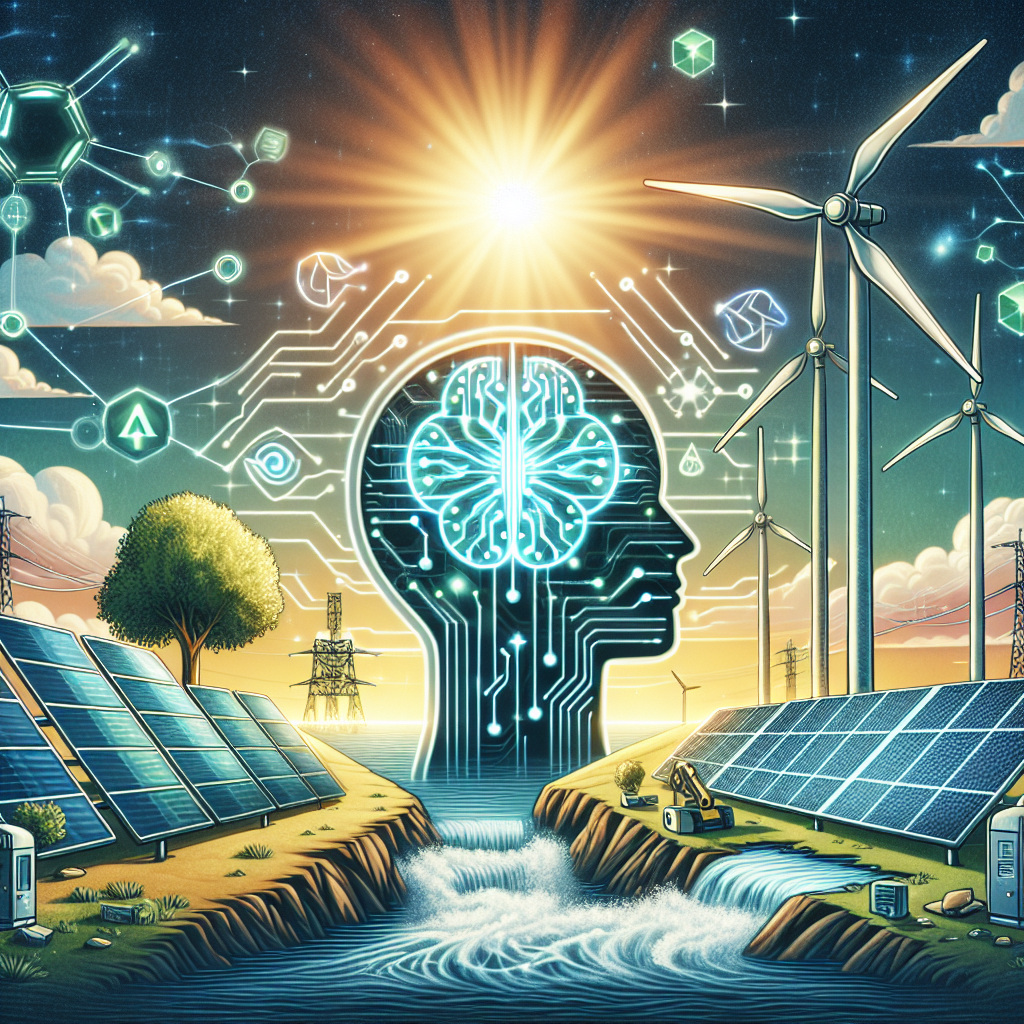Renewable energy sources such as solar, wind, and hydro power have gained significant traction in recent years as the world looks to move away from fossil fuels and reduce greenhouse gas emissions. However, the intermittent nature of renewable energy sources has presented challenges in terms of reliability and efficiency. This is where artificial intelligence (AI) solutions come into play, revolutionizing the way we harness and utilize renewable energy.
AI has the potential to optimize renewable energy systems by predicting energy production, managing energy storage, and improving overall efficiency. By leveraging AI technologies, renewable energy sources can be integrated seamlessly into existing energy grids, making them more reliable and cost-effective. In this article, we will explore how AI is transforming the renewable energy sector and driving the transition towards a more sustainable future.
Predictive Maintenance and Asset Monitoring
One of the key areas where AI is making a significant impact in the renewable energy sector is predictive maintenance and asset monitoring. By leveraging machine learning algorithms, AI can analyze vast amounts of data collected from sensors and monitoring devices to predict when equipment is likely to fail. This allows for proactive maintenance, reducing downtime and increasing the lifespan of renewable energy assets.
AI can also monitor the performance of renewable energy systems in real-time, identifying inefficiencies and optimizing energy production. By continuously analyzing data, AI can make adjustments to improve the overall performance of renewable energy systems, leading to increased energy output and cost savings.
Grid Optimization and Energy Management
Another important application of AI in renewable energy is grid optimization and energy management. AI algorithms can analyze data from renewable energy sources, energy storage systems, and energy demand to optimize the flow of electricity within the grid. By predicting energy demand and supply fluctuations, AI can help balance the grid and ensure a stable and reliable power supply.
AI can also optimize the use of energy storage systems, such as batteries, by determining the most efficient way to store and release energy. This helps maximize the use of renewable energy sources and reduce reliance on fossil fuels during peak demand periods. By integrating AI technologies into energy management systems, renewable energy can be utilized more effectively, reducing costs and emissions.
Smart Grids and Microgrids
AI is also playing a crucial role in the development of smart grids and microgrids, which enable decentralized energy production and distribution. Smart grids use AI algorithms to coordinate the flow of electricity between renewable energy sources, energy storage systems, and consumers. By optimizing the distribution of energy within the grid, smart grids can reduce energy losses and improve overall system efficiency.
Microgrids, on the other hand, are localized energy systems that can operate independently or in conjunction with the main grid. AI technologies can optimize the operation of microgrids by predicting energy production and consumption patterns, managing energy storage, and coordinating the flow of electricity within the system. This allows microgrids to operate more efficiently and reliably, providing a sustainable and resilient energy solution for communities and businesses.
FAQs
Q: How does AI improve the efficiency of renewable energy systems?
A: AI technologies optimize renewable energy systems by predicting energy production, managing energy storage, and improving overall system efficiency. By analyzing vast amounts of data in real-time, AI can make adjustments to maximize energy output and reduce costs.
Q: Can AI help integrate renewable energy sources into existing energy grids?
A: Yes, AI can help integrate renewable energy sources into existing energy grids by optimizing the flow of electricity, balancing energy demand and supply, and managing energy storage systems. This allows for a seamless integration of renewable energy sources into the grid.
Q: What are the benefits of using AI in renewable energy systems?
A: The benefits of using AI in renewable energy systems include increased energy production, improved system efficiency, reduced costs, and reduced greenhouse gas emissions. AI technologies help optimize the operation of renewable energy systems, making them more reliable and sustainable.
Q: How is AI used in predictive maintenance and asset monitoring in renewable energy systems?
A: AI is used in predictive maintenance and asset monitoring by analyzing data from sensors and monitoring devices to predict when equipment is likely to fail. By proactively identifying maintenance needs, AI helps reduce downtime and increase the lifespan of renewable energy assets.
In conclusion, AI solutions are revolutionizing the renewable energy sector by optimizing energy production, improving system efficiency, and integrating renewable energy sources into existing energy grids. By leveraging the power of AI technologies, we can accelerate the transition towards a more sustainable and renewable energy future.

